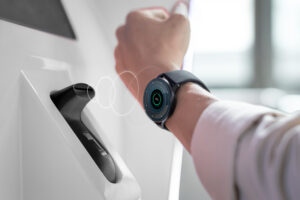The Technology Blog

Exercise Equipment for Seniors – Stay Fit Comfortably
Understanding the Needs of Seniors in Fitness
As we age, maintaining fitness becomes increasingly important for overall health and well-being. However, the needs of seniors differ from those of younger individuals. Seniors often face challenges such as reduced mobility, balance issues, and joint pain, which require specialized fitness equipment. Understanding these needs is the first step in selecting the right gear.
For instance, low-impact exercises are crucial for seniors to avoid unnecessary strain on joints. Equipment that caters to this includes recumbent bikes, which provide cardiovascular benefits without the harsh impact on knees and hips. Additionally, resistance bands and light dumbbells are excellent for strength training, helping to maintain muscle mass and bone density.
Safety is paramount, and equipment with safety features such as handrails and non-slip surfaces can prevent accidents. Adjustable equipment allows customization according to the individual’s fitness level and physical limitations, ensuring a comfortable and effective workout.
When choosing fitness equipment, consider:
- Low-impact machines that reduce joint strain
- Safety features to prevent falls and injuries
- Adjustability to cater to varying fitness levels
- Ease of use and minimal setup requirements
By focusing on these aspects, seniors can engage in regular physical activity that promotes health and prolongs independence.
The Benefits of Home Fitness Equipment for Seniors
Home fitness equipment offers numerous advantages for seniors, providing a convenient and comfortable environment to exercise. With the right equipment at home, seniors can maintain a consistent workout routine without the need to travel to a gym.
One of the primary benefits is accessibility. Having equipment at home eliminates barriers such as transportation issues or harsh weather conditions that might deter seniors from exercising. This accessibility encourages regular physical activity, which is essential for managing chronic conditions and improving quality of life.
Moreover, exercising at home allows seniors to work out at their own pace, reducing the pressure of keeping up with others in a gym setting. This personal space fosters a more relaxed and enjoyable exercise experience, which can be crucial for maintaining motivation.
Cost-effectiveness is another significant advantage. While the initial investment in home fitness equipment can be substantial, it often proves more economical in the long run compared to ongoing gym memberships. Furthermore, sharing equipment with family members can maximize the value of the investment.
In summary, home fitness equipment offers:
- Convenience and accessibility
- A comfortable, pressure-free environment
- Cost savings over time
- The potential for family use
These benefits make home fitness equipment a viable and attractive option for seniors looking to maintain their health and independence.
Key Considerations When Choosing Fitness Equipment for Seniors
Selecting the right fitness equipment for seniors involves careful consideration of several factors to ensure safety, effectiveness, and enjoyment. Here are some key considerations to keep in mind:
First, assess the individual’s fitness level and any health conditions. This assessment helps in choosing equipment that aligns with their capabilities and health needs. Consulting with a healthcare provider or fitness expert can provide valuable insights and recommendations.
Durability and quality are crucial, as high-quality equipment is likely to last longer and provide a safer workout experience. Look for equipment from reputable manufacturers known for their reliability and customer support.
Space availability is another important factor. Measure the available space in the home to ensure the equipment fits comfortably without causing clutter. Compact or foldable equipment can be a great solution for those with limited space.
Consider the ease of use and assembly. Equipment that is straightforward to set up and operate will be more frequently used. Features such as intuitive controls, clear instructions, and low maintenance requirements enhance user experience.
Finally, budget constraints should be taken into account. While it’s tempting to go for the most advanced equipment, it’s essential to balance features with affordability. Sometimes, simpler equipment can be just as effective if it meets the individual’s needs.
When choosing fitness equipment for seniors, consider:
- Fitness level and health conditions
- Durability and quality
- Space and storage capabilities
- Ease of use and assembly
- Budget and cost-effectiveness
By evaluating these factors, seniors and their families can make informed decisions that support a healthy and active lifestyle.









